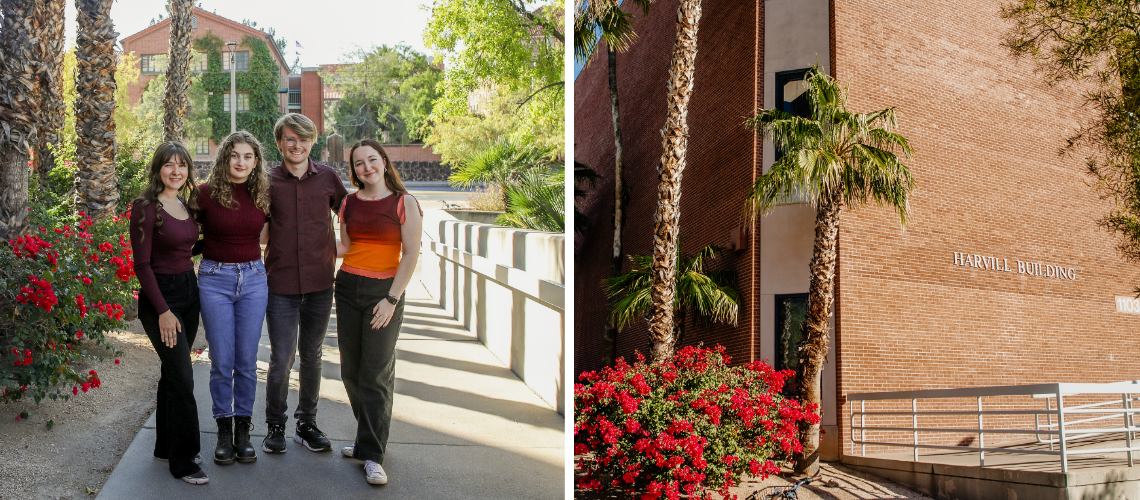
By Nolan Tomshack, Campus Sustainability Fund Committee member, photos by Tawni Eakman, Office of Sustainability.
Since the University of Arizona’s beginning, its facilities have been built with features that reduce energy consumption while accounting for the arid climate of the Southwest. The oldest building on campus, Old Main, was built in 1887 and featured high ceilings, shaded porches, and multiple windows to allow for a cross-breeze that would passively cool the building during Tucson’s sweltering desert evenings—design attributes that were considered cutting-edge for their time. As the University has advanced, so have the criteria for constructing buildings that are sustainable in energy usage. In 2009, with the construction of the Student Rec Center Expansion, the University committed to a benchmark of LEED Silver or higher for all new building projects on campus. But where does that leave the buildings that were built before this initiative? Some buildings, like Old Main, have undergone retrofits (Old Main received a LEED Silver rating in 2014), and for other buildings, it is the students, staff, and faculty at the University of Arizona who are continuing to work strategically across campus to improve facilities and reduce energy consumption.

One student group has been particularly busy identifying inefficient buildings across campus and working with Facilities Management to improve the building’s utility demand. Students for Sustainability (SFS), a program of the Office of Sustainability and the Associated Students of the University of Arizona, is the largest student sustainability organization in Tucson. The group is dedicated to building student leaders and advancing institutionalized sustainability. Among SFS's various subcommittees, the Energy and Climate Committee (ECC) found that replacing old, incandescent lights with LED lights not only resulted in energy savings but created a more enjoyable learning environment by reducing eyestrain.
The Committee’s initial research led them to the Richard A. Harvill building. Harvill, located north of Old Main on 2nd Street, was constructed in 1981. It fit the bill of being a highly trafficked building and having the potential for notable energy and cost savings. The ECC sought the support of Facilities Management’s Energy Manager, Michael Hoffman, and Commissioning and Analytics Specialist, Laura Galvan in Facilities Management, to conduct a lighting audit. From there, the team of students was provided with measuring tools and instructional training. Camille Tinerella, a Junior majoring in Environmental Science, a Co-Chair of the ECC, and one of the Project Managers of the Harvill Lighting Project initiative, notes that their team “conducted many level one energy audits. Our team surveyed the Harvill building, collecting measurements related to both the lighting and HVAC (heating, ventilation, and air conditioning) systems. Metrics such as average air temperature, lumens output, and quantity of lights were recorded.” Over the course of a semester, data was collected and sent to Facilities Management to determine the most efficient plan for relamping, the process of replacing old lights with newer, more efficient ones.
The student leaders and Facilities Management staff turned to experts like Brad Strizver, a Fire and Electrical Renovations Project Manager Lead, to find the most cost-effective and resourceful plan. Strizver explains that “Harvill presented a small challenge of having a lot of surface mounted light fixtures in mostly the hallways. In order to save the cost associated with taking the old fixtures down and patching and painting, we were able to find a retrofit kit that allowed us to gut out the old technology in these fixtures and replace the insides with new LED efficient technology.”
With the audit completed and a plan of action mapped out, the team sought funding to move the project from a proposal to a fully funded initiative. The Energy and Climate Committee applied for and successfully secured an Annual Grant from the Campus Sustainability Fund, a program of the Office of Sustainability that seeks to fund sustainable initiatives across campus. Additional funding came from the Utility Modification Revolving Fund, an internal funding source at the University for high-performance efficiency projects that can eventually pay for themselves by reducing utility consumption. The project was completed in January of 2024, and for the students and staff who collaborated throughout its development, it was a resounding success. a program of the Office of Sustainability that seeks to fund sustainable initiatives across campus. Additional funding came from the Utility Modification Revolving Fund, an internal funding source at the University for high-performance efficiency projects that can eventually pay for themselves by reducing utility consumption. The project was completed in January of 2024, and for the students and staff who collaborated throughout its development, it was a resounding success.
Then next time you’re in Harvill, look up and check out the new LED light fixtures. Read on to meet the team responsible for Harvill’s new energy-efficient lighting and learn more about how the project came to fruition!
Let’s meet the students and staff behind the project!
This project was led by four student co-leads who bring distinct and valuable skillsets to the team.
From left to right, the team Camille Tinerella, Avery Berger, Sam Gibbons, and Julia Petty:
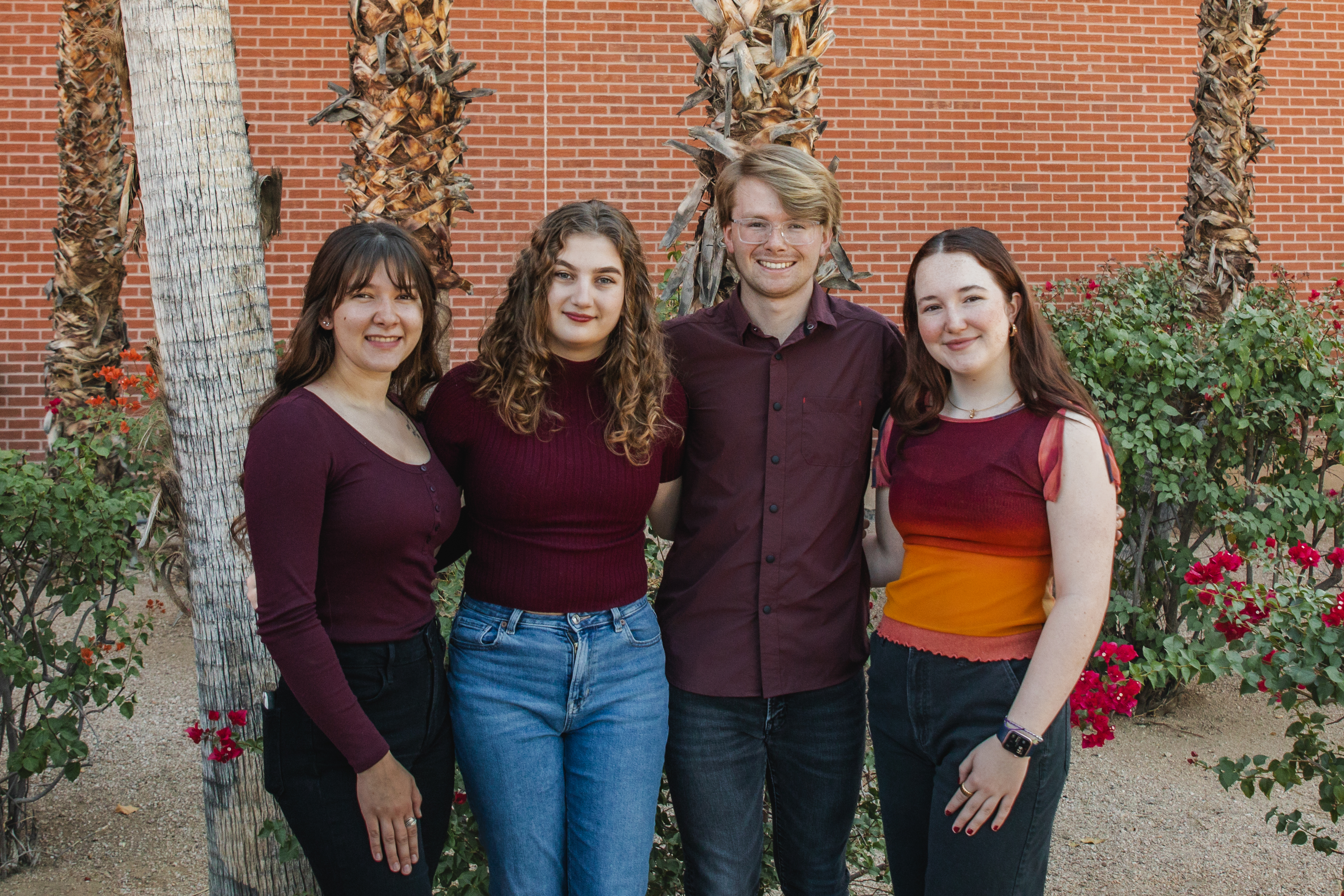
The team of people who relamped the building included staff from Facilities Management and staff from Faulk Electric, a subcontractor the university works with. From left to right, one team includes German Simmons, Reynaldo Cruz-Angule, David Urbano, Samuel Ortiz, and Brad Strizver.
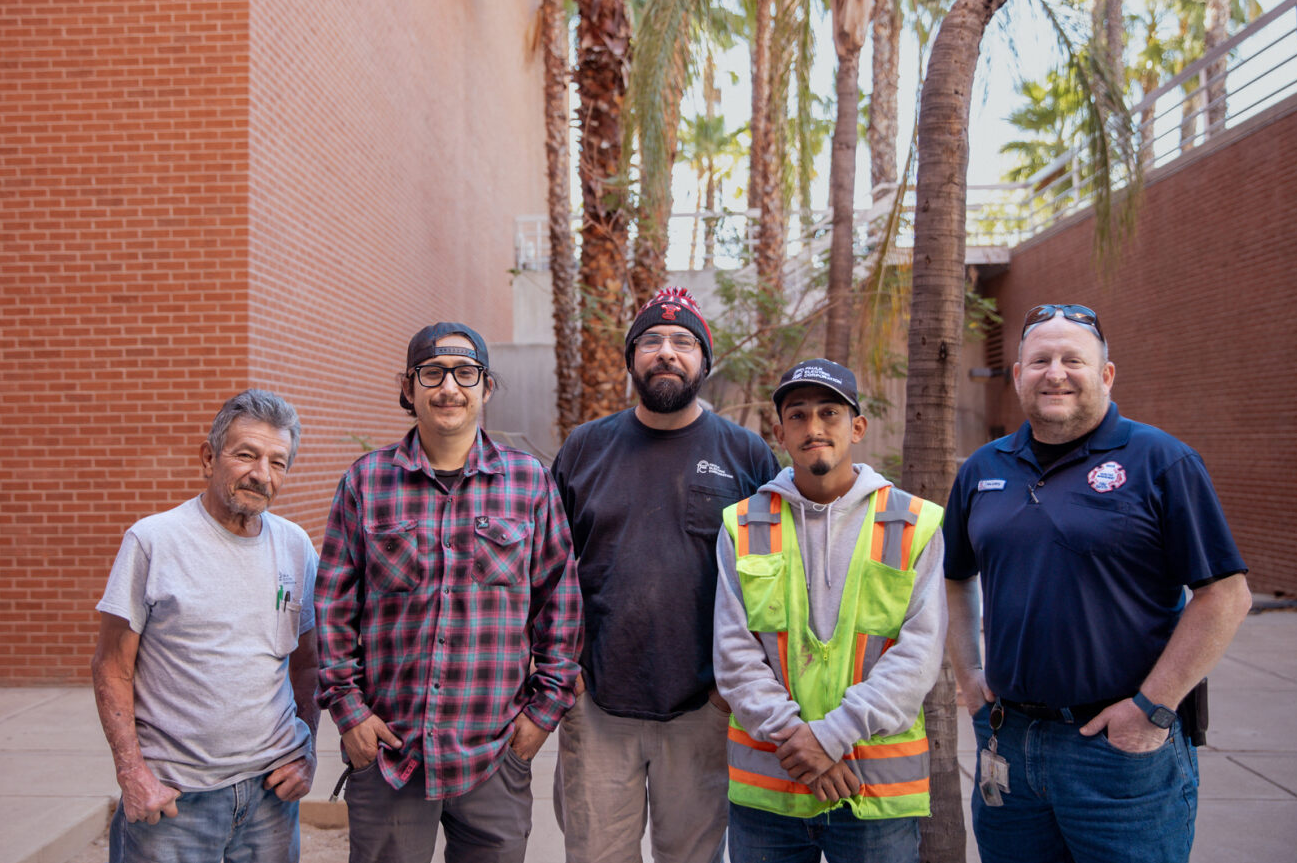
The process
A complete overhaul of the lighting in a multi-story building is no small task; This project required extensive planning and coordination across multiple departments and committees. Julia Petty, an undergraduate student studying Marketing, notes that “many people do not get to work on a project as intricate as this one until they have a full-time job; however, I have been lucky enough to learn how to do so in my undergraduate experience.” To that same end, Sam Gibbons, a sophomore majoring in Neuroscience & Cognitive Science and Economics, and a Co-Chair of the Energy and Climate Committee, mentions that since the onset of the project, he has “gained significant experience with project management, delegation, meeting facilitation and planning, and professional coordination and correspondence with University organizations.”
Avery Berger, a Junior studying Architecture and Sustainable Built Environments, recalls that their team “had to learn how to measure lighting intensity and gauge potential problems in the existing lighting system.” She says that at first, “we were very naive about how complicated the project would be, and we had a lot of learning experiences because of it. For instance, when we first started the energy auditing process, we thought we would have to visit the buildings we were surveying a couple of times and take note of typical occupant usage; however, we ended up spending 25 hours auditing Harvill alone.”
While many students in their university experience will participate in research, internships, and fellowships, project and grant management is a unique opportunity that both the Campus Sustainability Fund and Facilities Management prioritizes. Gibbons continues: “My biggest takeaway from this project is the immense professional development opportunities that managing or co-managing a grant can provide. Not only does it introduce you to numerous professionals within the University, but it also develops management, organizational, and communication skills far beyond what the classroom itself can provide."
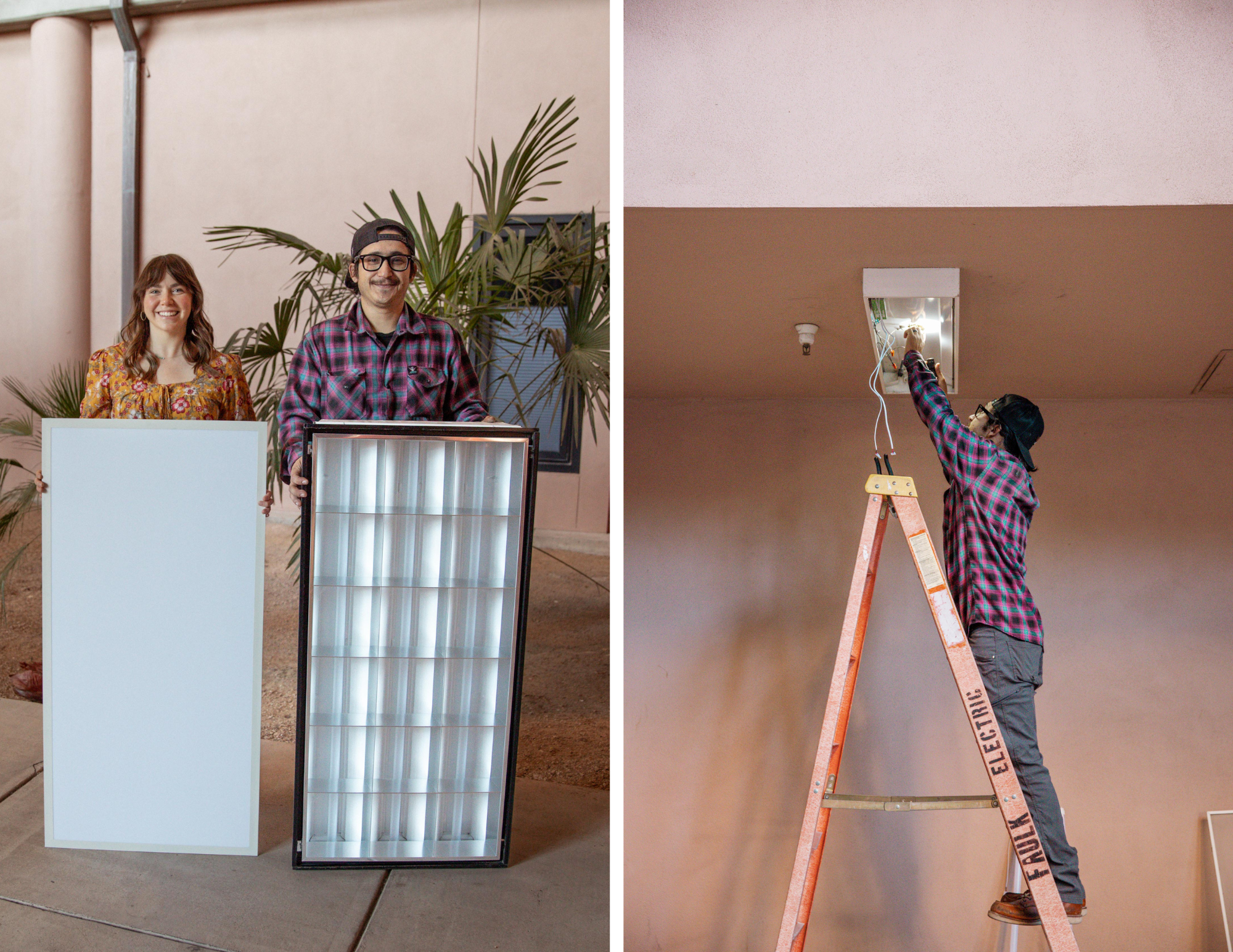
Long-term Sustainability
The new panels are both more efficient fixtures themselves, but also save time and money on labor in the long-term because they require less up-keep and are easier to maintain than the older bulbs. This, combined with the electricity savings, results in a project that saves the University funds in the long-run while also creating a more enjoyable learning environment for students and faculty. Strizver shares that he thinks “these types of projects are amazing when they can be funded. Besides replacing tired, older looking fixtures with modern looking LED panels, the future energy and maintenance savings for the campus are tremendous. Our team has only done a few complete buildings, but we use the newer LED technology almost exclusively when doing renovations of spaces in university buildings.”
This project doubles down on outcomes for both the environment and for students. It has been shown that LED’s mimicry of natural light can improve focus and attention for students, and they also require much less electricity to operate. Gibbons explains that “LED lighting creates a better, more evenly lit environment for learning by reducing eye strain and blue light exposure. But the primary impact is environmental. By switching to LEDs, the energy used on lighting was reduced by 42%...That translates to saving approximately $10,000 annually, given current electricity pricing.” Updating the lights in older buildings makes a large impact on their energy demand and saves money in perpetuity—benefits that make efforts like this one well worth it.
Beyond these advantages, Tinerella shares that this project also improved the safety of Harvill. She explains that the new LED lighting is safer for students because “the outdated lighting is partially composed of mercury within the lightbulb itself. If broken, this can present a safety hazard to students.” As for the old lightbulbs and fixtures, fear not, Strizver works with an in-state recycling facility and mentioned that the “the fluorescent bulbs will be saved to use for the reminder of their lifespan.” Other bulbs and fixtures are recycled safely, ensuring that the lighting update isn’t resulting in extraneous waste in our landfill.
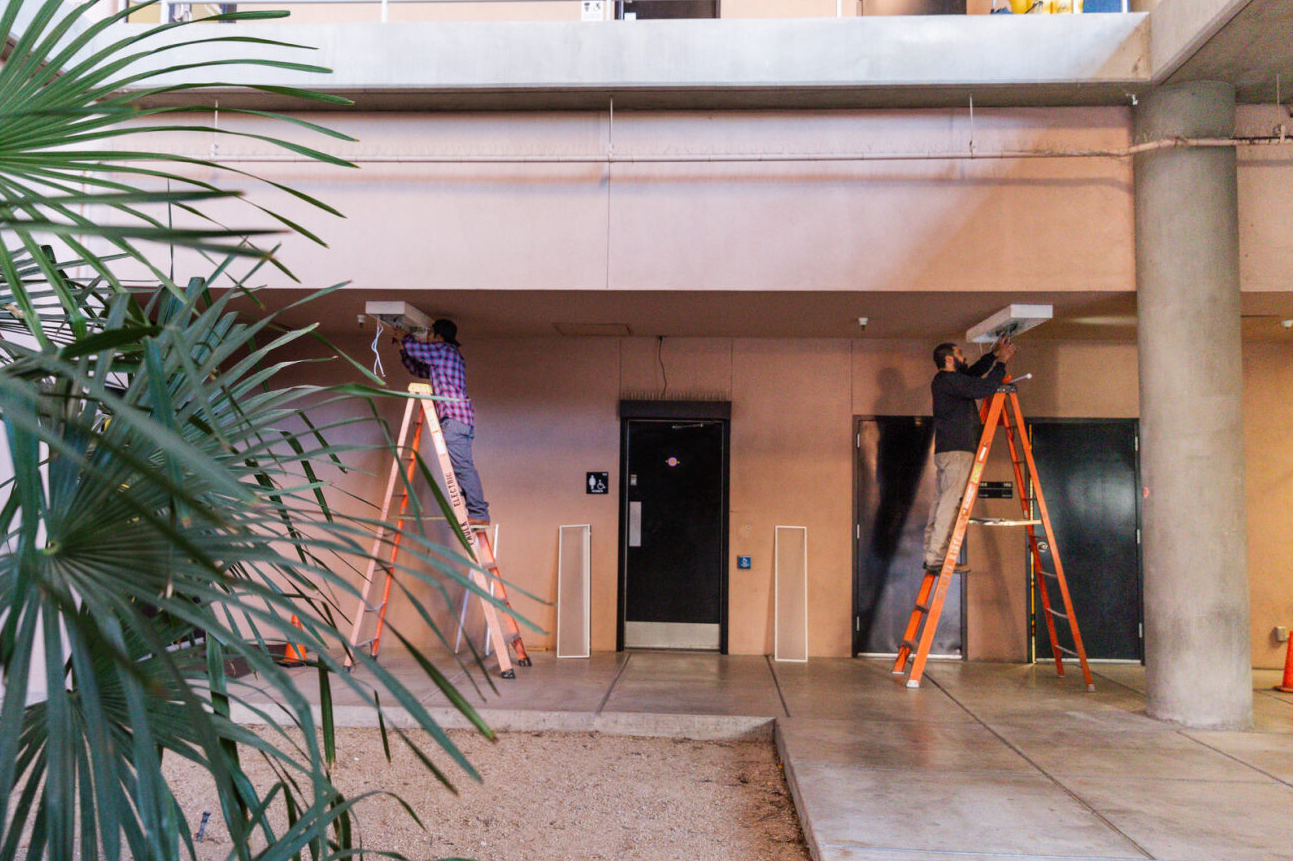
Creating a Culture of Sustainability on Campus
While the relamping portion of the project is completed, the educational elements are ongoing. To commemorate the project, the student team wanted to incorporate an art piece that highlights the benefits of the project. A banner will be placed in the courtyard of Harvill later this semester featuring art by Sawyer Sullivan, a member of SFS, that “displays an LED light illuminating a Sonoran Desert landscape which signifies a more sustainable future [that] can be realized through small changes such as using LED lights too.” Gibbons worked diligently with many various groups across campus to ensure the banner itself would be in the most optimized place. He coordinated with the Art Committee, Sign Committee, and the Sign Shop within Facilities Management, ultimately landing the banner on the west-facing wall of the courtyard. The intention is for the banner to be up for a year or two in the hopes of catching students’ eyes and piquing their interest in the student-led effort.

The project team is also hoping to educate building users on the importance of utility reduction. Though building standards are changing and high-efficiency builds are the new normal, the behavior of people inside those buildings still makes a large impact on the footprint of that building. Even the most energy-efficient building still requires occupants to actively participate in utility-reduction behaviors.
Though the Campus Sustainability Fund supports projects like the re-lamping of Harvill, project proposals also need to include elements of education and community engagement to be eligible. Berger shares that “After we started to pursue the CSF grant, we realized that to ensure our chances of getting funding better, we needed to expand our project to be more holistic. To do this, we developed our project to be more than just new lights; we have actively pursued educating students on the renovation through social media posts and an art installation dedicated to our project.” While this was an additional undertaking by the team, Berger elaborates that “If we just sought funding elsewhere, we wouldn't have had the opportunity to create a meaningful connection with our project to the community it is supposed to serve.”
To move the project beyond a utilitarian one and into an initiative that also prioritizes education, behavior change, and campus engagement, the team designed educational flyers to go in the classrooms permanently. Petty shares that “the behavior change signs that we are planning on putting in each classroom is what I believe will cause the most awareness about the importance of energy efficiency. Those are specifically catered to remind students and faculty to turn off lights and inform them about the benefits of switching to LED lights.” The signs will be placed above each switch in the classrooms and direct people to make the choice to turn off the lights and a QR code that leads them to the project’s webpage. Petty continues: “Hopefully this will spark a behavioral change through students who engage with these signs.”
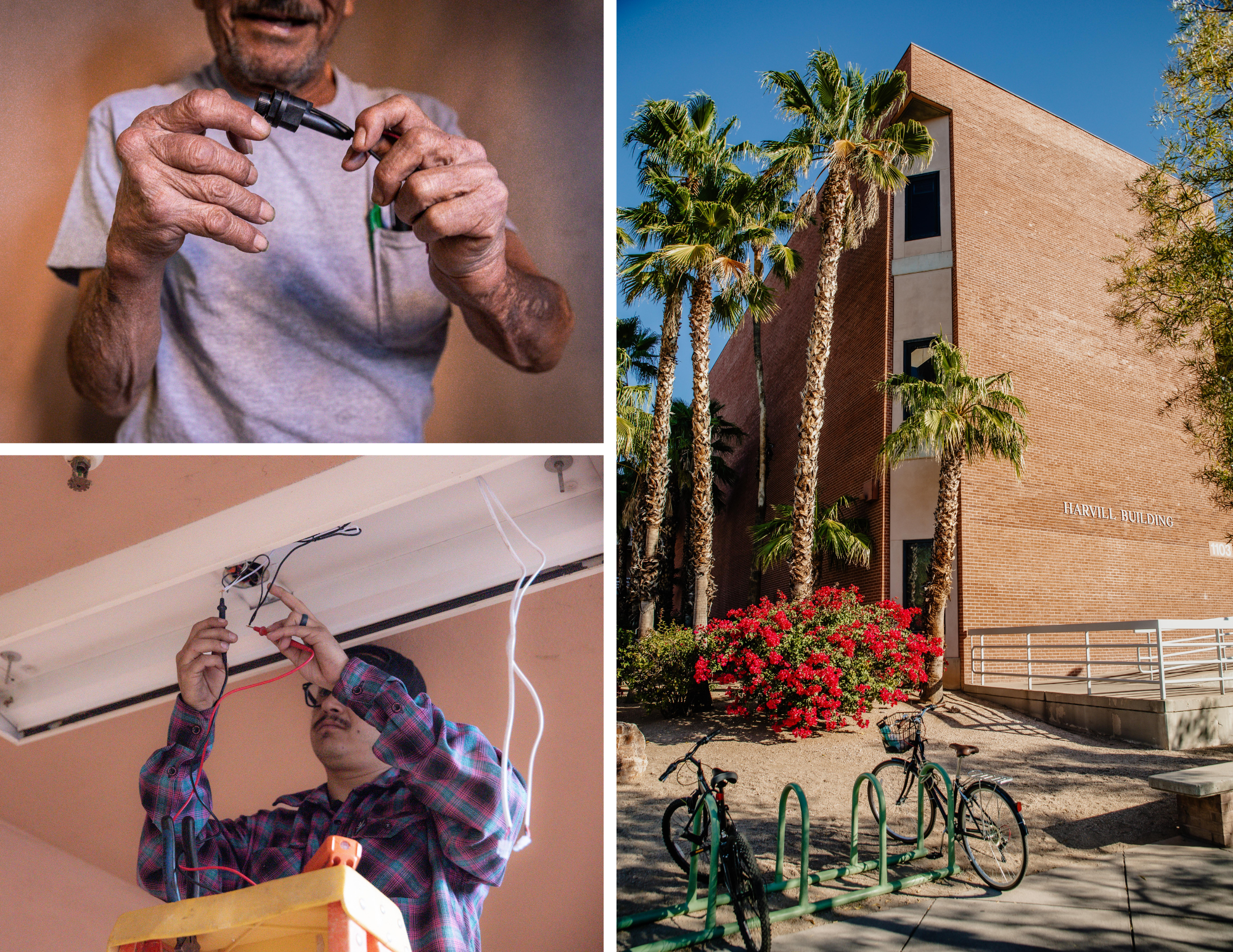
Energy savings for years to come
While the relamping was officially completed in January 2024, the energy savings can’t be compared to previous years just yet. The energy usage will be monitored by Laura Galvan, and after a few months of data collection, the data will speak for itself. That said, the projections are promising. Before the project, Harvill consumed approximately 275,000 kWh a year. With the lighting replacement alone, it is projected that Harvill’s consumption will drop to about 159,000kWh annually, which is impressive considering the age of the building. The hope is that this switch, along with educating building users to be aware of their own behavior, the savings will be even greater.
For projects as large as these, the level of planning, coordinating, and fund-finding can seem overwhelming, but the Harvill Lighting Project proves how successful students are at putting their passion to work, and that passion can fuel the drive for an energy-efficient future for all facilities across campus, regardless of when they were built.
“My biggest takeaway from this project was how much of an impact simple ideas can have. In the grand scheme of things, changing fluorescent lights to LED lights is not an extremely innovative idea. This is especially true as most new buildings are already constructed with LED lights due to their benefits. However, it is something that is still extremely beneficial to help fund and get done in older buildings. There are large cost benefits, but more importantly there is a great amount of energy savings especially for such large buildings like Harvill. It is really cool to see how such a simple idea can really make a change, and I am very happy that I was able to be part of this change!” – Julia Petty
